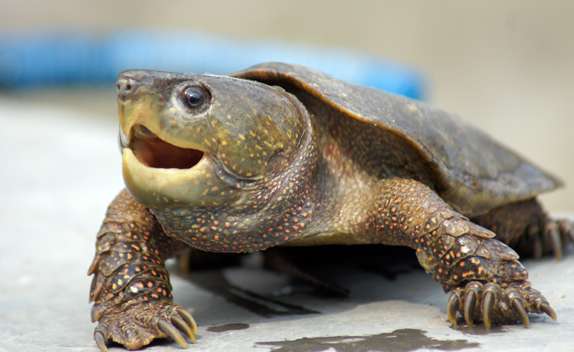The eagle-billed turtle is a national first-level protected animal. The basic requirement for raising big-headed turtles is a lower temperature. If the temperature exceeds 25°C, the turtles may suffer from heat stroke and may die. Especially for young turtles whose temperature regulation function is not yet complete, as long as the temperature is properly controlled, it is not difficult to raise them. Eagle-billed turtles are nocturnal, hiding in rock crevices or at the bottom of the water during the day and coming out to look for food at dusk or night. They will also enter hibernation when the temperature drops below 15°C.

The sharp claws allow them to not only adapt to the rocky and fast flow of mountain streams Their characteristics also allow them to develop the skill of flying over rocks and walking over walls. When raising them, care should be taken to cover them to prevent them from escaping.

Because of the rocky environment, they have also developed a very large heart. And a hard head. The hard bones of the head also have the same protective function as the turtle shell, so although the head cannot be retracted into the shell, it is not easily injured. The hook-shaped mouth is like an eagle's beak, so it is called an eagle-billed turtle. Basically, the eagle-billed turtle is not as vicious as its appearance, but is quite gentle on the contrary. However, some individuals are particularly aggressive, and their sharp hooks can cause serious bites, so you still need to be careful.





